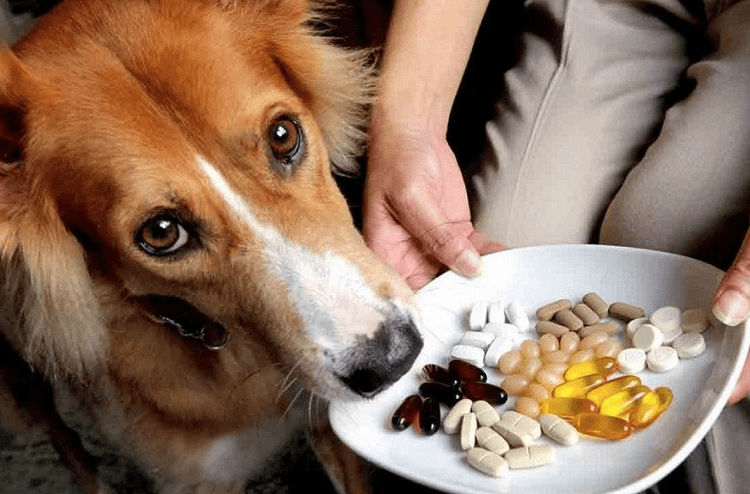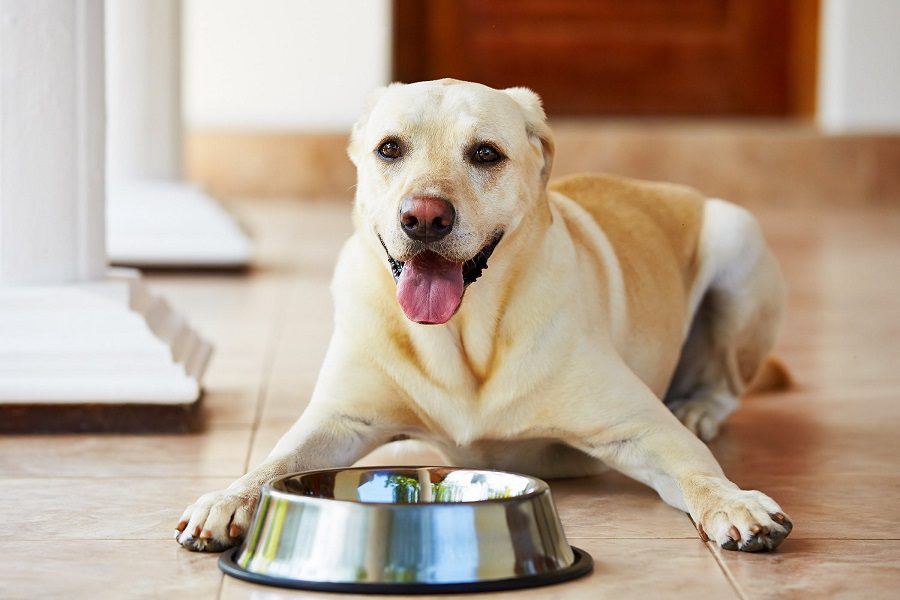Last Updated: 10 months ago
Did you know that the average lifespan of a dog depends greatly on the size and breed of the dog?
The typical large-breed dog tends to have a shorter life span. Of all the giant breed dogs, only about 13% of them will live to be older than 10 years old.
For a little bit of perspective, 38% of all small-breed dogs will live to be older than 10 years old. Because dogs age faster than we do, we have to give them senior dog food so that the dog receives the proper nutrients.
The question many people have is: When is a dog considered a “senior?” Typically, dogs will be considered senior when they are in the last quarter of their lives.
A large dog like a Bernese Mountain dog, which has a life expectancy of 8 to 10 years, is considered a senior when they are between 6 and 7.5 years old. Yet, a small dog like a Chihuahua, who has a life expectancy of 15 to 18 years, is considered a senior between 9 and 10 years old.
As you read through this guide, we are going to cover a lot of information about senior dogs, the health problems they face, why your dog needs senior dog food, and so much more.
Without further delay, let’s dive in!
Effects Of Age On A Dog
Like people, as a dog ages, they are going to go through a lot of changes.
It is up to us, their owners, to do everything we can to help them make their final years a little more comfortable. Here are some common effects aging has on dogs:
Vision
Sometimes, as a dog gets older, they will begin to bump into walls, have difficulty standing upright without falling, or show signs of eye discomfort such as constant tearing, redness, and cloudiness.
Suffering from an eye disorder or vision loss is part of the dog’s aging process, but you can consult your vet for advice on how to handle a visually impaired dog.
Problems Urinating/Defecating
Just like humans, dogs can experience bladder and continence problems as they get older. If your dog has difficulty urinating or if it cannot control its bladder, it may have kidney disease or a UTI.
These problems can be treated, either with medication or by simply changing their diet. Your vet will be able to help you decide which (if not both) is the best option for your dog.
Oral Health
An older dog is going to show signs of oral diseases if you aren’t cleaning their teeth regularly (either by manually brushing them, having the vet clean them, or using dental treats).
Dental hygiene is just as important for dogs as it is for humans, and it’s never too late to start brushing their teeth to avoid common signs of oral trouble such as bad breath, excessive drool, inflammation of the gums, and even loose teeth.
Skin
Dogs are susceptible to experiencing skin problems at any age, but it is more likely to happen as they reach their senior status.
Some conditions include dry skin, excessive itching, rashes, and even hair loss. These conditions are usually treated by simply changing the dog’s diet.
Weight
There are some breeds that will have a difficult time staying at a healthy weight, whether they gain too much weight or they’ve lost too much weight. Neither situation is ideal for a dog, but this is especially true for older dogs.
Should a dog be overweight, they are at a greater risk of developing diseases like diabetes, heart disease, and cancer. When you go to the vet, be sure to ask them about senior dog food and how it can help manage your dog’s weight.
Mobility Problems
It can be depressing when your once lively dog is now sluggish and has trouble getting around the house. Joint issues like arthritis, hip dysplasia, and musculoskeletal disorders are common problems older dogs face.
You can help alleviate and/or stop the progression of these joint problems by giving your dog food that is rich in omega-3 fatty acids and antioxidants. Of course, like with other conditions, it is always best to get advice from your vet before making any changes.
Behavioral / Cognitive Dysfunction
As your dog gets older, its mental faculties may decline.
They may be more temperamental or irritable than usual; they may show signs of confusion and disorientation; or they may even have memory problems (like being unable to remember where the food bowl is).
Sometimes older dogs will display repetitive actions such as licking you and pacing; they’ll eat more; or they may even be more vocal than they used to be.
When you notice anything unusual about your dog’s behavior, you will want to go to the vet so they can properly diagnose your pup.
Adult Dog Food Vs Senior Dog Food: What’s The Difference?
According to a survey conducted by Tufts University, 84% of people surveyed said that older dogs need to eat differently than an average dog. Interestingly enough, only half of those respondents say they actually feed their dog senior-specific dog food.
A balanced diet is crucial to your dog’s overall health and well-being. Your pet should be able to receive all the nutrients they need from any food you get at the store, but this also depends on your dog’s health and what your vet recommends.
Older dogs have different nutritional needs than adult dogs because their bodies are, essentially, reaching an end.
When you’re feeding a senior dog, they are going to need food that will help them maintain a healthy weight and reduce or prevent the development of disease. With an adult dog, the food is basically just fuel that’ll be used to maintain their current energy level and weight.
Some people will lead you to believe that senior dog food should not have reduced levels of protein.
In fact, older dogs need to have protein in their diet to maintain good muscle mass. Also, you’ll notice that dog food formulated for older dogs will have fewer calories per serving because older dogs are more likely to gain weight, which is not ideal.
Types Of Senior Dog Food
In 2014, American dog owners spent an estimated $22.6 billion on pet food, and those figures only keep increasing.
There’s no denying that we love our dogs, and the dog food industry is more than happy to give us a wide variety of food options that’ll keep our pups happy.
Here’s a look at the different types of dog food you can feed your elderly dog:
Dry Food
Up until the 1860s, people would feed their dogs any leftover table scraps. However, James Spratt thought of a more convenient way to feed their dogs: a biscuit.
Spratt took the idea from the biscuit rations sailors used to survive off of but formulated it for a dog’s needs.
Kibble
Kibble is a type of dry food that is made with an extruder. To make the food, the wet and dry ingredients are mixed together to form a type of dough. The dough is then placed into a machine that uses hot water or pressurized steam to cook the ingredients.
Then, when the food is still under high temperature and pressure, the dough is forced through an extruder and cut into small pieces.
The kibble is dried, then sprayed with fats, vitamins, minerals, and oils, and then sealed in an airtight bag so the fats and oils do not spoil.
Dehydrated / Freeze-Dried Food
As the name would imply, dehydrated food has had all of its moisture removed. The dehydrated or freeze-dried food maintains all of its original nutritional value because it is raw before it goes through the process.
Also, an added benefit of this type of food is that it won’t spoil, no matter how long you keep it. Unfortunately, this type of food is going to be pretty expensive, but you don’t have to feed your dog as much because of all the nutrients in the food.
Keep in mind that if you have dehydrated food, you may have to rehydrate it. Freeze-dried food, on the other hand, does not require reconstituting with water.
Wet Food
Wet food will come in one of two forms: in a can or in a pouch. Canned food usually has up to 78% moisture, unless the food is labeled as a “stew,” “in gravy,” or “in sauce,” as they would have 87.5% moisture.
Most wet food features a higher protein content, lower carbohydrates, and, in some instances, more fat than dry dog food. Is wet food better than dry food? It really depends on what your dog prefers.
Frozen Food
Frozen dog food is still relatively new, but more and more stores are offering a select variety of frozen dog foods.
What Conditions Are Available In A Senior Dog Food Formula?

Long gone are the days when you’d just pick up one kind of food (wet or dry) for your dog. Now you have to read the packages to find the dog food that is specifically tailored to what your dog needs.
There is now a variety of senior dog food that is formulated to help with a specific dietary need. These specialty diets include:
- High Protein: The high protein diet is tailored to follow a carnivore or raw diet for dogs. The belief is that dogs are related to wolves, so for a dog to be truly healthy, they should eat a diet that is close to what their ancestors (the wolves) ate.
- Low Protein: A dog who is suffering from kidney disease or is in renal failure will be given a dog food low in protein; however, there is research that shows a moderate to high amount of protein isn’t harmful to a dog, even if they are having kidney problems.
- Low Calorie: Low-calorie dog foods are designed to help dogs with heart disease but also help overweight dogs lose weight.
- Grain-Free/Low-Carb: Grain-free dog food is pretty popular right now because people are discovering their dogs are developing allergies to common grains used in dog food, such as wheat and corn.
- Hypoallergenic: Hypoallergenic dog food is often made from exotic proteins like quail, duck, rabbit, and so forth. They do not contain any of the common dog food allergens such as beef, chicken, chicken eggs, corn, dairy products, fish, lamb, soy, or wheat.
- Sensitive Skin: Skin sensitivity isn’t just a result of diet. They could have skin problems due to parasites and pests, as well as a weakened immune system or a digestive system that doesn’t absorb nutrients properly. Dog food is for sensitive skin. Usually, hypoallergenic and sensitive skin dog foods are one and the same.
- Prescription Diet: There are some conditions where a dog will need a special kind of food that only your vet can give you. Conditions that may need a prescription diet include UTI, weight and metabolism issues, heart disease, mobility problems, digestive conditions, renal conditions, and more.
What Are Senior Dog Supplements For?

Supplements aren’t just something humans take; elderly dogs can benefit from supplements too. This is particularly true if the dog has arthritis or joint pain.
Fortunately, a lot of dog food manufacturers already include glucosamine and chondroitin sulfate (both of which help with your dog’s joint pain) in their formulas. You can also find omega-3 fatty acid supplements to help your pup.
If you are going to give your dog supplements apart from what is in their dog food, you will want to make sure you’re giving them veterinary formulations rather than supplements designed for people.
FDA And AAFCO: Senior Dog Food Safety Guidelines Explained
Dogs don’t care what they eat; they just want to eat! It is your job to make sure that you’re giving them food that is going to fulfill the nutritional needs your dog has.
There is an organization called the Association of American Feed Control Officials that establishes model labeling standards for dog food makers, and it is up to the manufacturers to uphold these standards.
The AAFCO is a voluntary organization that dog food makers can choose to join (or not). The association doesn’t endorse any brand, so you won’t see a stamp of approval on the packaging of your favorite dog food.
Instead, the AAFCO develops ideal quality standards, regulations, and even laws that determine what ingredients go into your dog food. The goal of the AAFCO is to ensure that your dog, regardless of their life stage, will receive a balanced and complete diet.
While the AAFCO sets these standards, they do not enforce them. The AAFCO doesn’t have the power to close down manufacturers for using low-grade ingredients or if the food has ingredients not listed on the packaging.
So, whose job is it to enforce these standards?
That would be the FDA and local, state, and federal feed control agencies. Of course, it is worth noting that the aforementioned people are members of the AAFCO.
The Label, Explained
The dog food label is regulated by the FDA on a federal level. The label must have:
- Name of product
- Net quantity statement
- Manufacturer’s name and address
- Ingredient list
Name Of Product
The name of the product is usually the first thing people look for when they are looking at something on the shelf, so manufacturers will use colorful language to emphasize a particular quality or ingredient of the food.
These companies cannot name their products whatever they’d like, though. They must follow the percentages of named ingredients as detailed by the AAFCO.
- 95% Rule: Pet food that has simple names like “Chicken for Dogs” or “Salmon Cat Food” has very few ingredients. The primary ingredient (like the chicken or salmon from the examples) must make up 95% (weight-wise) of the ingredients used. This doesn’t count water that’s been added during processing.
- If the food has two ingredients in the name (“Chicken and Rice Dog Food”), then the combined total of these two ingredients must equal 95%. Also, the name of the food must reflect which ingredient is used most. In this example, chicken would be the primary ingredient, and rice would be the secondary ingredient. It cannot be the other way around.
- 25% Rule: The 25% rule is applied to food where the named ingredient must make up at least 25% and below 95% of the product weight. These foods are labeled “dinner,” and you’ll see packages with “Chicken Dinner” on the packaging. Other common names that fall under this category include “Nuggets,” “Entrée,” “Platter,” and “Formula.”
- 3% Rule: With the 3% rule, the product name is highlighting a minor ingredient that didn’t merit the “dinner” name. An example of this would be “Chicken Dinner with Cheese,” and the cheese would have to make up 3% of the ingredients used in the formula.
Net Quantity Statement
The net quantity statement just lets you know how much food is in the package. The FDA has regulations that dictate the size, placement, and even format of the statement that must appear on the packaging.
Manufacturer’s Name And Address
These items must appear on the packaging so people know who made the product, as they are responsible for its safety and quality.
If the label says “manufactured for” or “distributed by,” then the food was made by an outside company, but the brand name is still responsible for the quality and safety.
Ingredient List
Just like the labels on the food we eat, pet food must have an ingredient list that is organized by the weight of the ingredient used.
Unfortunately, this is slightly problematic because ingredients are weighed and listed as they are added to the recipe. That means when ingredients with a lot of moisture are added and cooked, the actual weight of the ingredient is going to be less.
Let’s say company A lists chicken as the first ingredient and barley as the second. Company B lists barley as the first ingredient and chicken meal as the second. Company A will boast that chicken is its primary ingredient and it is better than Company B, which uses barley as its main ingredient.
One may assume that Company B is subpar because they use more barley than chicken meal.
But, the truth is chicken meal is more nutritious than fresh chicken (there is 300% more protein in a meat meal than a regular piece of meat) because the fresh chicken has had its moisture removed during the cooking process.
The chicken meal is actually more nutritious, even though it is listed as the second ingredient.
Conclusion
Once you’ve transitioned away from puppy food and into adult food, you have to realize that this is not going to be the last dog food you ever buy. Your dog is going to get old, and they are going to need senior dog food to help them stay healthy.
When you walk down the pet food aisle, the aisle is usually broken into two sections: canned food and dry food. Even then, there are so many options to choose from that it’s easy to feel overwhelmed if you’re looking for new senior dog food for your four-legged best friend.
If your dog is just getting up there in age and you want to give them dog food that’ll give them a balanced diet, then we’ve created a helpful buying guide that you may find useful.
Resources:



